Spiritfarer is a management and adventure videogame about caring for wandering spirits until they are ready to enter the afterlife. I guide the player character Stella, a young woman, as she takes over the responsibilities of the Spiritfarer from Charon, the mythological figure who ferries the dead over a cranberry-red river into the afterlife. Using a ramshackle ship and a malleable tool called the Everlight, I explore a purgatorial sea, visiting islands to find spirits ready to pass on. After helping them resolve their final business, I take them to the Everdoor where they enter the next plane of existence.
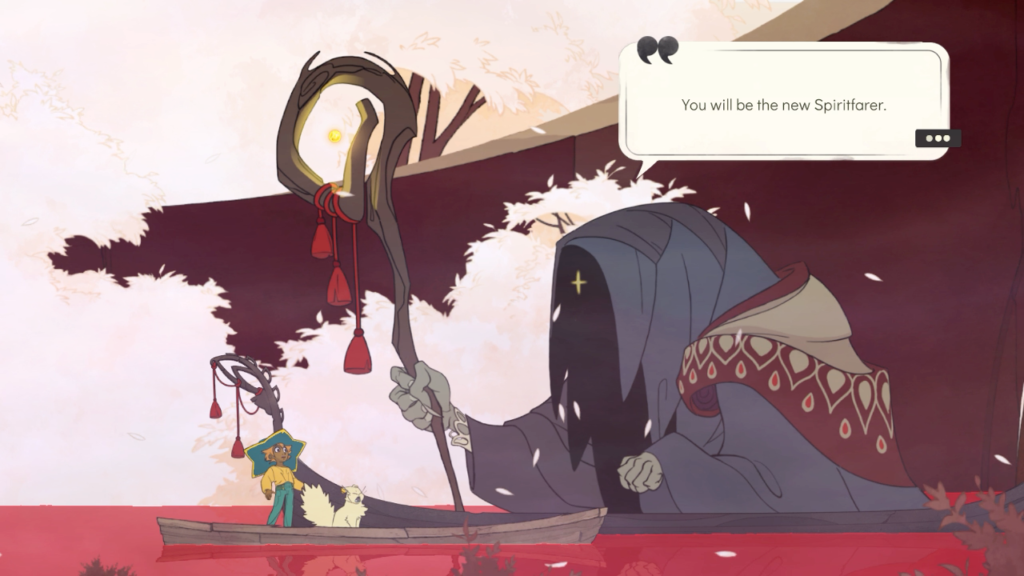
The main activity in Spiritfarer is managing the spirits that come aboard the ship. Taking the form of anthropomorphized animals, each spirit has unfinished business they want to resolve before leaving. It’s up to me to support them in their goals and ferry them between destinations. Gwen, a stately reindeer spirit, wants to visit her childhood home. Summer, a gentle vegan snake, is haunted by nightmares about dragons and asks Stella to locate and speak with these dragons throughout the sea. Atul, a gregarious frog, doesn’t want to go anywhere or do anything in particular, but has an appetite for dishes that I must scrounge for far-flung ingredients to make. These are only the first three of the dozen spirits that come under Stella’s care over the course of Spiritfarer.
A lot of time passes while Stella crosses the sea fulfilling the spirits’ requests. They don’t spend this time waiting patiently; their moods must also be managed. In addition to their character-specific requirements, each spirit needs a daily meal and a place to sleep.
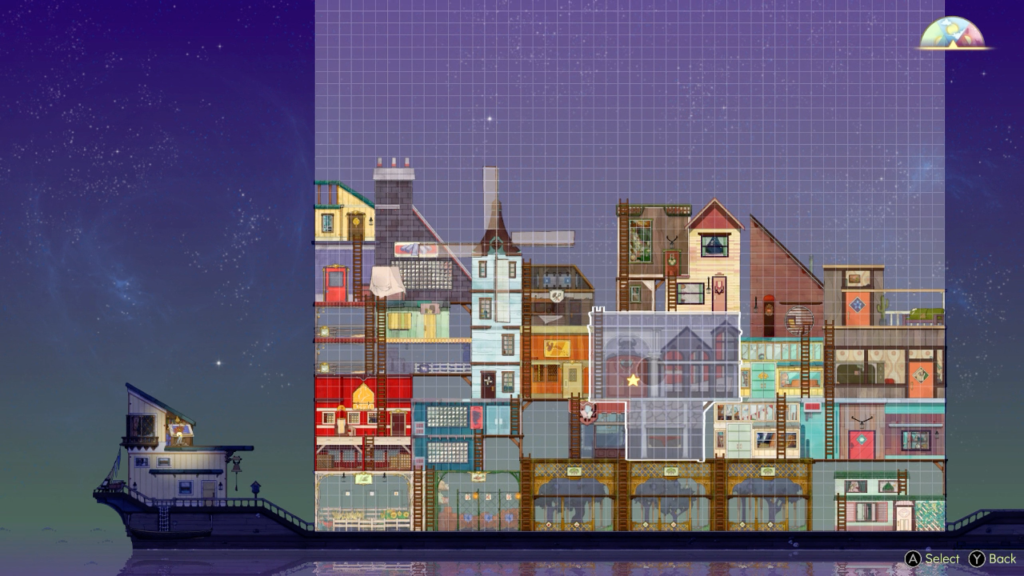
The ship must be modified to meet these needs, becoming as much a floating hotel as a ferry to the afterlife with Stella acting as concierge. Shortly after becoming the Spiritfarer, the ship has a kitchen and an all-purpose bedroom every traveling spirit must share. By the ending the ship has unique bedrooms for each spirit, multiple gardens and orchards, a henhouse, a loom, a forge, a windmill, and many other buildings. These are built on the deck in an awkward patchwork suspended by precarious stilts and videogame logic. All of these specialized areas produce the resources needed to further upgrade the ship’s ability to travel the sea and keep the spirits happy.
The result is there is always something to do in Spiritfarer and, thanks to the multipurpose Everlight tool, it’s never a chore to do it. I only need to glance around me to find what needs to be done next.
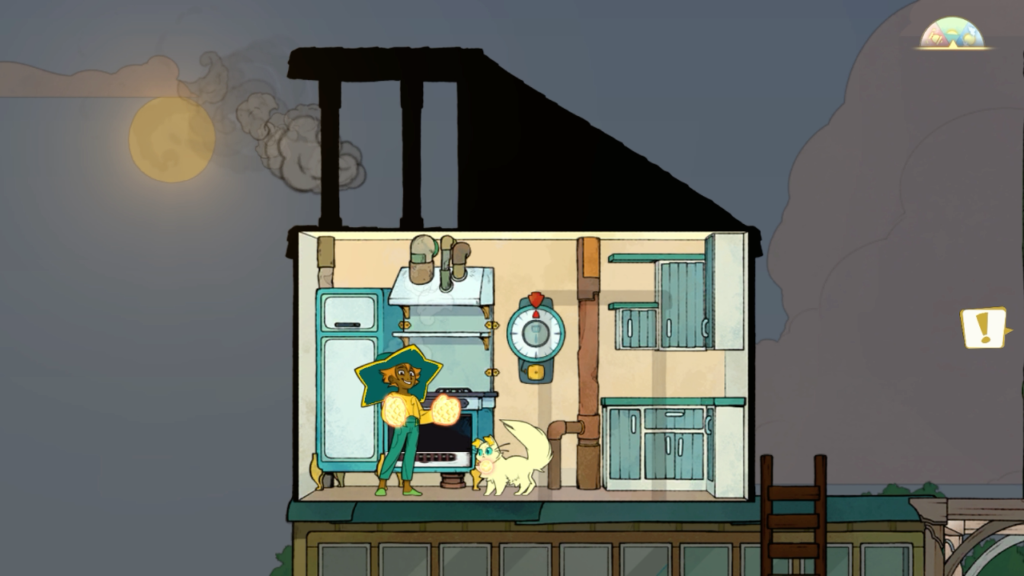
A typical session of Spiritfarer unfolds like this: Stella awakens in the morning midway on a course set for one of Summer’s dragons. I send her out onto the deck and ring a bell to wake the spirits. I soon meet Atul, who tells Stella he is hungry. I head for the kitchen and pop the ingredients for pork chops into the oven, the Everlight transforming into golden oven mitts to keep Stella from getting burned. The pork chops will take several minutes to cook so I go back outside and see the crops in the garden next door are thirsty. I water them, the Everlight transforming into a golden watering can that never needs to be refilled.
There’s still time left before Atul’s pork chops finish. I remember I need more linen thread to build a cottage for Alice, so I head over to the loom to weave some more. Every production building uses a simple minigame to create their goods. At the loom I have to hold and release the action button with specific timing represented by a sliding arrow attached to the loom; the better my timing, the more goods I will produce from the same amount of raw material. I hear the “ding” of the kitchen timer, so I gather up my produced linen thread and return to the kitchen to retrieve and deliver Atul’s pork chops. He’s delighted—Atul loves to eat almost anything, but pork chops are his favorite.
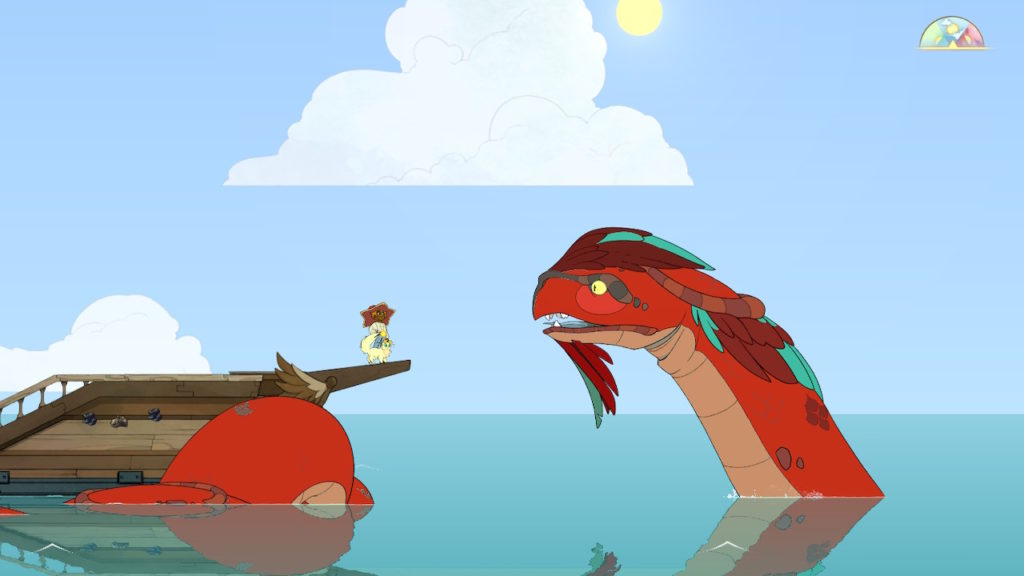
There are still a few minutes before we reach Summer’s dragon. I check in with the other spirits and they seem content, so I spend the remaining time using the Everlight to fish off the ship’s stern, pulling up flounders I can cook and tchotchkes I can sell for glims, the local currency. I’m interrupted when the ship passes through a lightning storm; by scampering into halos of light that appear around the ship’s deck, I can capture Lightning in a Bottle which I need to create rare construction materials. After the storm, we reach the dragon. Summer and Stella speak with the dragon, then a happier Summer makes a new request. I set a new course to fulfill the new objective, and the whole process starts over again.
This description may make Spritifarer sound chaotic, overwhelming, and exhausting, but I never felt that way. In other management videogames, particularly in farm sims, there is a hard time limit on each in-game day which all activities must be finished within. Failure leads to withered crops, barren livestock, and personal bankruptcy. Spiritfarer doesn’t demand maximum efficiency. The ship stops moving when night falls, but the next day does not begin until I put Stella to bed, giving me plenty of time to catch up on unfinished tasks.
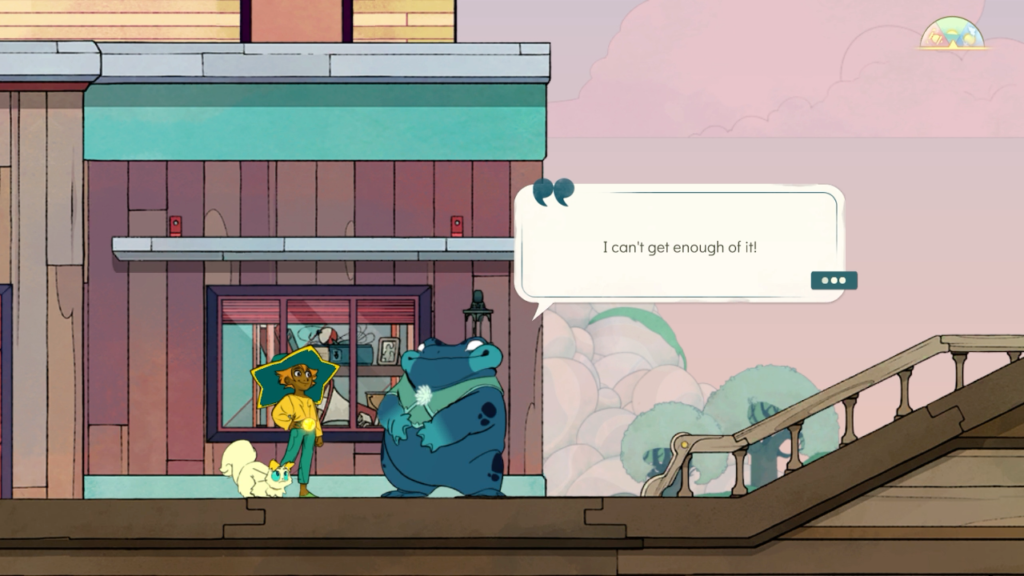
Dry crops will wait indefinitely to be watered; an unattended oven takes several real-world minutes before burning its food; an unhappy spirit will refuse to progress in their quest until I improve their mood, but will never outright abandon ship. There are no game-overs in Spiritfarer. Each task is an example of “do this, or don’t,” never “do this, or else.” A player able to juggle the many tasks aboard the ship and the needs of its passengers will progress faster, while a less efficient player experiences the same content at a more leisurely pace.
Stella’s duties as the Spiritfarer also take her away from the ship. From the bridge I can view a map of the sea and choose my next destination, including a couple dozen small islands. These islands range from serene forests to foreboding mines to sleepy villages to busy industrial ports. By docking on these islands I can find new spirits to take aboard the ship and gather wood and ore needed for construction and upgrades, but it’s not always as simple as going there.
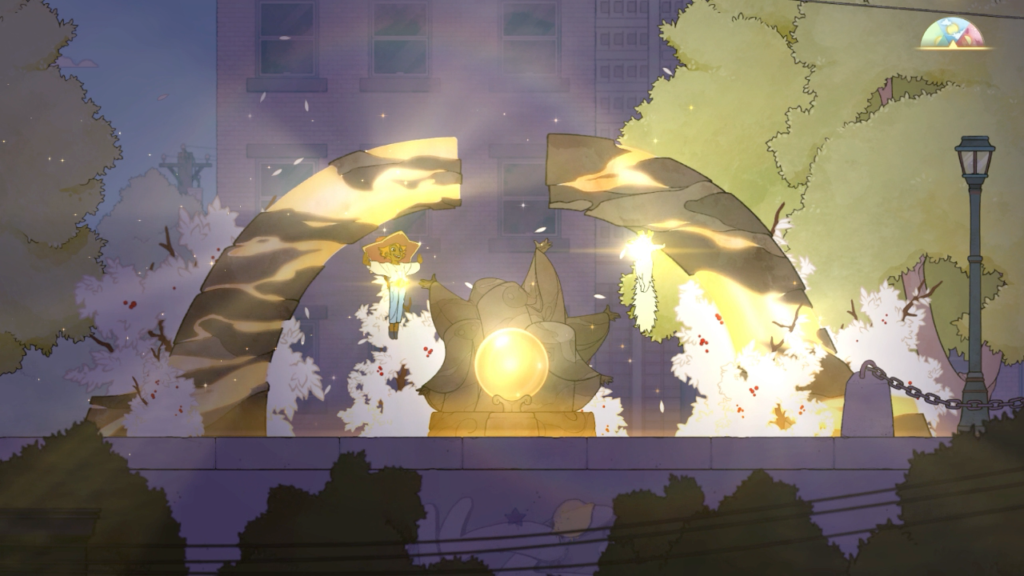
An art collector named Susan cannot be reached until Stella learns to Double Jump, and Susan’s island cannot be reached until the ship’s prow is equipped with an icebreaker to penetrate a frozen barrier bordering the sea’s northern region. Unlocking these movement abilities is tied to rewards earned from the spirits, a smart design choice that keeps progress through the sea tied to caring for the spirits. I can never get so wrapped up in exploration that I forget the Spiritfarer’s responsibilities.
After hours of play and in-game weeks of catering to the spirits’ needs, a spirit will decide they are ready to visit the Everdoor to pass on. The Everdoor is the gateway to the afterlife, a massive arch reflected perfectly in a rosy river. It could be a foreboding portal into the unknown, but it manages to feel pleasant and welcoming. When they visit the Everdoor, Stella leaves the ship with a spirit but returns alone. This moment could easily feel mechanical, but it never loses its emotional impact thanks to how well-written the spirits are. Each feels like a real person, flawed and vulnerable, at times selfish, at times conciliatory.
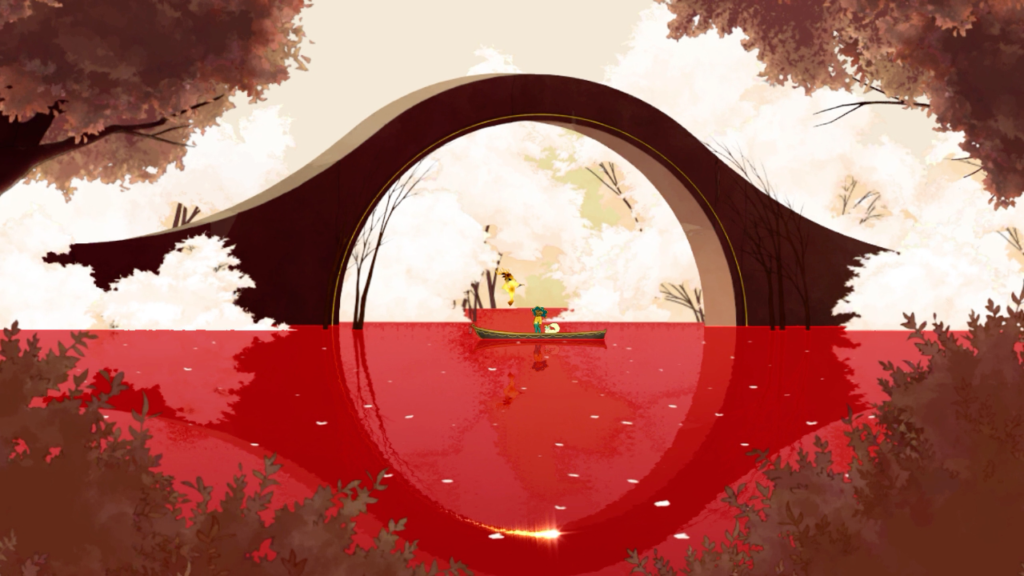
Gwen comes from an aristocratic background and has the mannerisms to show for it, but she regards Stella more as a little sister than as a servant. She is the most supportive of Stella’s charges, literally providing the tutorials explaining how to be a Spiritfarer. Summer follows a strict vegan diet, introduces gardens and orchards to the ship, and is an almost stereotypical New Age spiritualist, though her snake form suggests the unsavory industry she worked in during her human life—a literal snake in the grass. Atul is loud and friendly to the extent he can annoy the other passengers, but this demeanor covers for his inability to confront loss and departure. He carries an unhealthy amount of unexpressed grief.
Each visit to the Everdoor contains finality, but of different kinds. Some are of grim acceptance, others of joyous relief, others of fearful hesitation. It is Stella’s last task to be there for them in that final moment. It is what Spiritfarer is ultimately about: Only by caring about and supporting others right up until the end can they truly move on. But then Stella returns to the ship and there are still more spirits there that need her support. The Spiritfarer’s job is never-ending. Dying is easy; living well is the hard part.
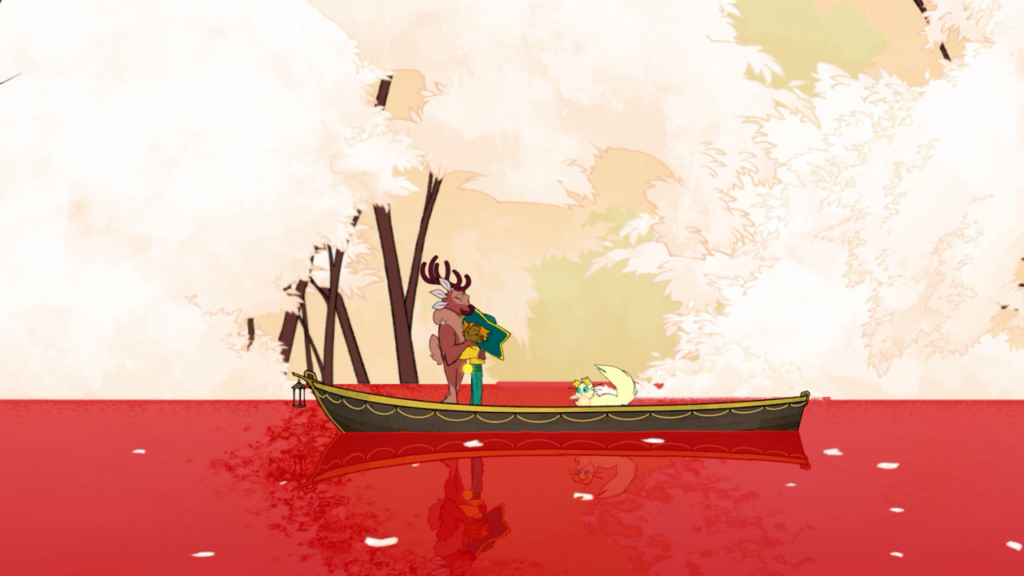
Spiritfarer describes itself as “the cozy management game about death,” and that’s just about a perfect description. The simplest, most effective care that Stella can provide her charges is to give them a daily hug. As memorable as Spiritfarer’s design and theme is, it is the image of Stella hugging the spirits under her care that will stay with me longest. It would be a good videogame in any other year, but arriving in the middle of 2020, with a deadly disease sweeping the world and ideological polarization driving us to distrust our neighbors and disown our families, makes Spiritfarer an especially timely release. Its message about caring for others is one we always need, but especially need right now.